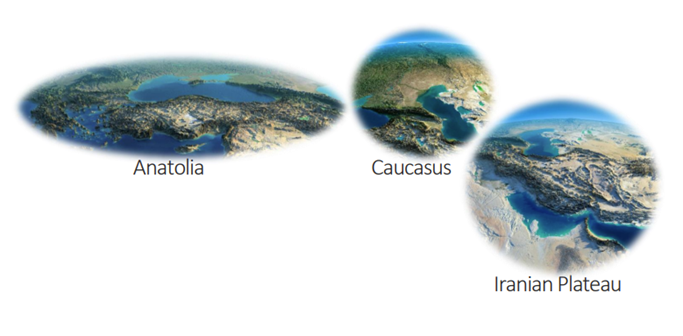Universitetsavisen
Nørregade 10
1165 København K
Tlf: 21 17 95 65 (man-fre kl. 9-15)
E-mail: uni-avis@adm.ku.dk
PhD thesis defense
PhD thesis defense — Vahid Teknik 21 June
Date & Time:
Place:
Zoom: https://ucph-ku.zoom.us/j/63309030142
Hosted by:
Geology Section, Department of Geosciences and Natural Resource Management, Øster Voldgade 10, 1350 København K
Cost:
Free
Vahid Teknik defends his thesis,
Crustal structure in the central Tethys realm
Supervisors:
Professor Hans Thybo, Professor Irina Artemieva, Professor Abdolreza Ghods
Assessment committee:
Professor Valerie Maupin, University of Oslo – Norway
Professor Wolfgang Rabbel, Kiel University – Germany
Professor Klaus Mosegaard (chair), Niels Bohr Institute, UCPH
Abstract
The Central Tethys realm including Anatolia, Caucuses and Iranian plateau is one of the most complex geodynamic settings within the Alpine-Himalayan belt. To investigate the tectonics of this region, we estimated the depth to magnetic basement (DMB), as a proxy for the shape of sedimentary basins, and average crustal magnetic susceptibility (ACMS) by applying the fractal spectral method to the aeromagnetic data. Magnetic data is sensitive to the presence of iron-rich minerals in oceanic fragments and mafic intrusions, hidden beneath sedimentary sequences or overprinted by younger tectono-magmatic events. Furthermore, a seismically constrained 2D density-susceptibility model along Zagros is developed to study depth extension of structures.
By comparing the DMB with ACMS, we conclude:
High ACMS indicates steep and gentle lineaments that correlate with known occurrences of Magmatic-Ophiolite Arcs (MOA) and low ACMS coincides with known sedimentary basins in the study region such as Zagros. We identify hitherto unknown parallel MOAs below the sedimentary cover in eastern Iran and the SE part of Urima-Dokhtar Magmatic Arc (UDMA). The result allows for estimation of the dip of paleo-subduction zones.
Known magmatic arcs (Pontides and Urima-Dokhtar) have high-intensity heterogeneous ACMS. We identify a 450 km-long buried (DMB >6 km) magmatic arc or trapped oceanic crust along the western margin of the Kirşehır massif from a strong ACMS anomaly. Large, partially buried magmatic bodies form the Caucasus LIP at the Transcaucasus and Lesser Caucasus and in NW Iran. ACMS anomalies are weak at tectonic boundaries and faults.
However, the Cyprus subduction zone has a strong magnetic signature which extends ca. 500 km into the Arabian plate.
We derive a 2D crustal-scale density-susceptibility model of the NW Iranian plateau along a 500 km long seismic profile across major tectonic provinces of Iran from the Arabian plate to the South Caspian Basin (SCB). The seismic P-wave receiver function section is used to constrain major crustal boundaries in the density model.
We demonstrate that the Main Zagros Reverse Fault (MZRF), between the Arabian and the overriding Central Iran crust, dips at ˜13° angle towards NE and extends to a depth of ˜40 km. The trace of MZRF suggests ˜150 km underthrusting of the Arabian plate beneath Central Iran. We identify a new crustal-scale suture beneath the Tarom valley separating the South Caspian Basin curst from the Central Iran. The high density lower crust beneath Alborz and Zagros might possibly be related to partial eclogitization of the crustal root at depths deeper than ˜ 40 km.
A digital version of the PhD thesis can be obtained from the PhD secretary phd@ign.ku.dk
